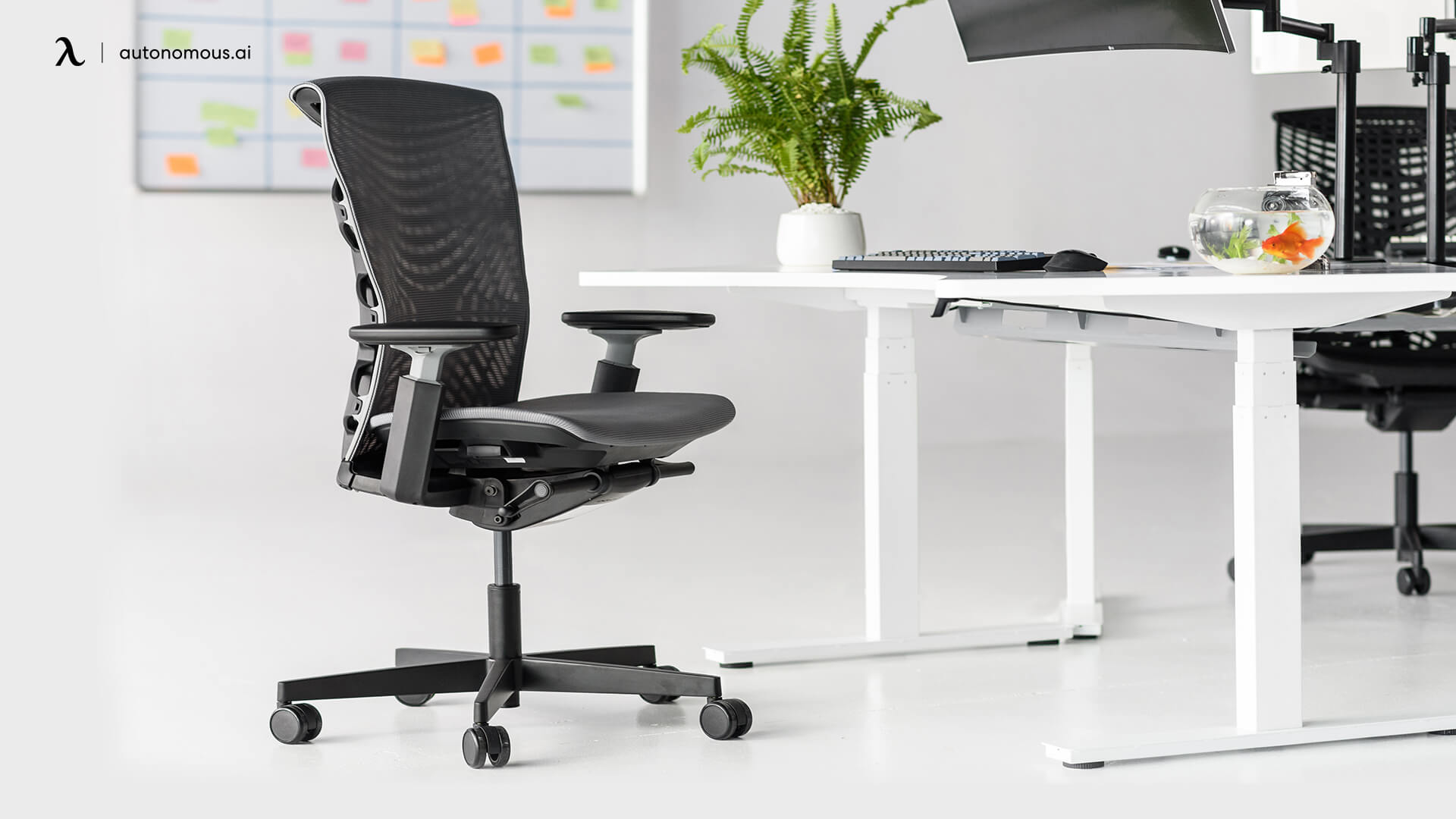
High-Back vs. Mid-Back Chair: Find Your Best Fit
Table of Contents
Selecting the right office ergonomic chair can make all the difference in your comfort and productivity. Whether you need a high-back chair for full-body support or a mid-back chair for a more flexible, space-saving option, understanding the benefits of each is key.
A high-back office chair offers extended support for your neck and shoulders, making it ideal for long sitting sessions, while a mid-back chair provides essential lumbar support and is perfect for those who need to move around frequently.
Let’s dive into the guide on how high-back and mid-back chairs will enhance your workday and overall comfort.
What Is A Mid-Back Office Chair?
A mid-back office chair typically features a backrest that reaches just above the waistline, providing support for your mid and lower back. Unlike high-back chairs, these chairs don’t include a headrest.
The mid-back chair is designed to provide essential lumbar support, and while it doesn’t extend to the neck, it helps users maintain a neutral spine position for short-term tasks.
Although many office workers prefer an office chair with a high backrest when comparing a mid-back chair vs a high-back chair. However, if you need to perform many tasks, frequently move back and forth, a mid-back office chair is your best bet.

Benefits Of A Mid-Back Office Chair
- Compact And Space-Efficient Design:
A mid-back office chair is often more compact than its high-back counterpart. This makes it ideal for smaller workspaces or shared office environments.
If you're working in a home office or a crowded workspace, the mid-back chair saves valuable space while offering sufficient comfort and support for tasks that don’t require long sitting periods.
- More Mobility:
Since mid-back chairs typically have a lighter, more streamlined design, they are easier to move around. This is particularly beneficial in flexible work environments or multi-desk office setups where frequent movement or repositioning is necessary.
If you're furnishing a compact or shared living space—like a college dorm—this kind of mobility becomes even more useful. You might want to explore our dorm room office chair guide for more portable, space-saving seating options.
- Suits Shorter Sitting Periods:
By comparing mid-back chairs vs high-back chairs, the mid-back chairs are particularly well-suited for short-to-moderate durations of sitting, such as for meetings or quick tasks. They’re not built for all-day use, but they encourage more dynamic posture as the user tends to shift or adjust more frequently.
- Helps Prevent Over-reliance On Full Back Support:
By providing lumbar support but leaving the upper back less restricted, the mid-back chair encourages users to sit upright with natural spinal alignment rather than relying entirely on back support, which may promote more active, engaged sitting.
- Affordable Option:
Typically, mid-back chairs are less expensive than high-back chairs due to fewer materials and a simpler design. This makes them an affordable office chair for budget-conscious buyers who still need an ergonomic option for light to moderate office work.
- Versatility Across Settings:
Whether in a traditional office, a meeting room, or as part of a co-working space, the mid-back chair adapts well to various professional settings, thanks to its minimalist and functional design.
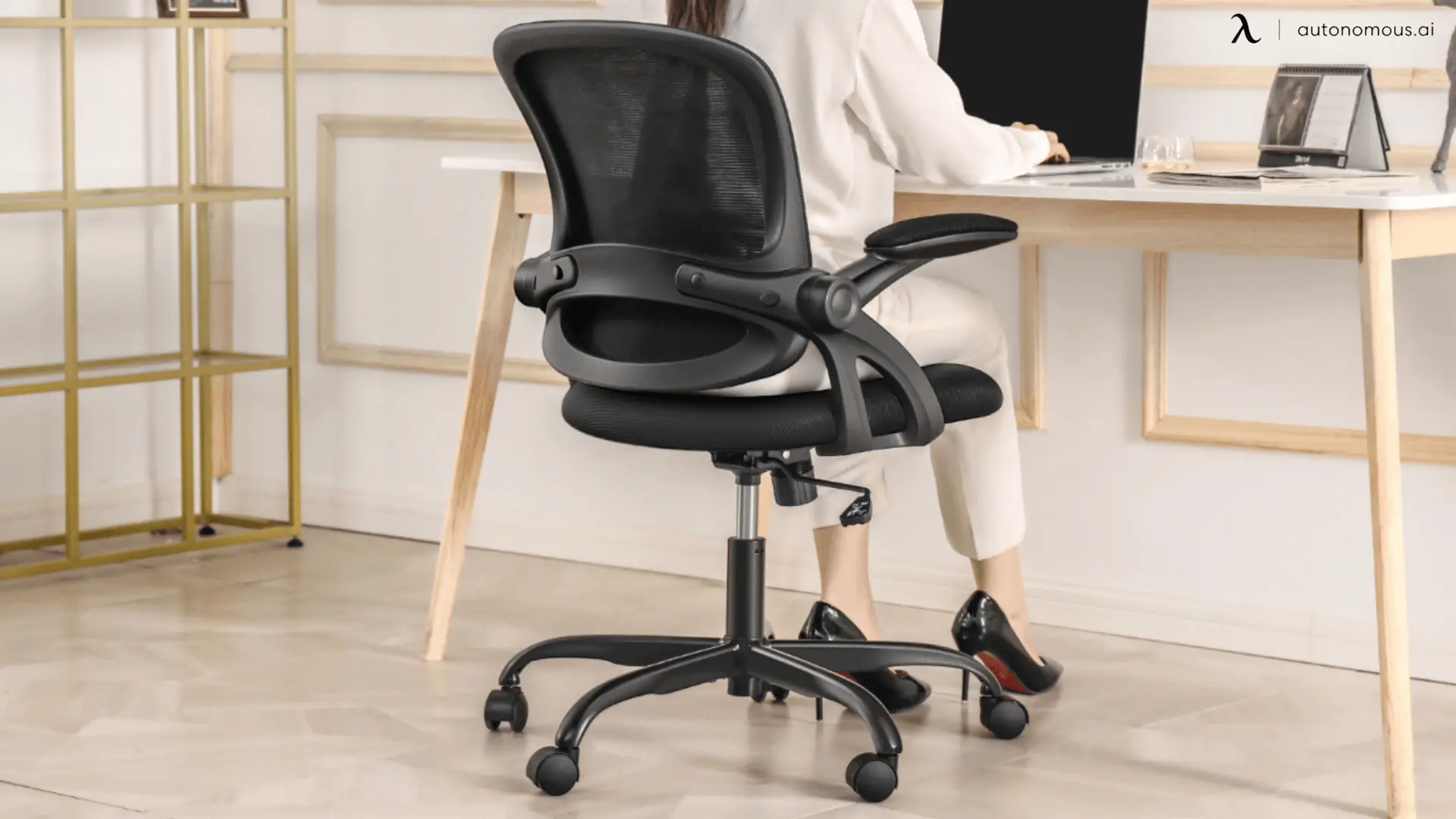
What Is A High-Back Office Chair?
A high-back office chair is characterized by its taller backrest, which extends well above the shoulders and typically includes a headrest. This design provides full-body support, offering relief for the neck, shoulders, and upper back.
These chairs often come with advanced ergonomic features such as lumbar support, adjustable headrests, and even reclining functions, making them a top choice for those who sit for extended hours.
If you're experiencing back pain, you may want to check out our best office chairs for back pain to find the right choice that offers the support you need.
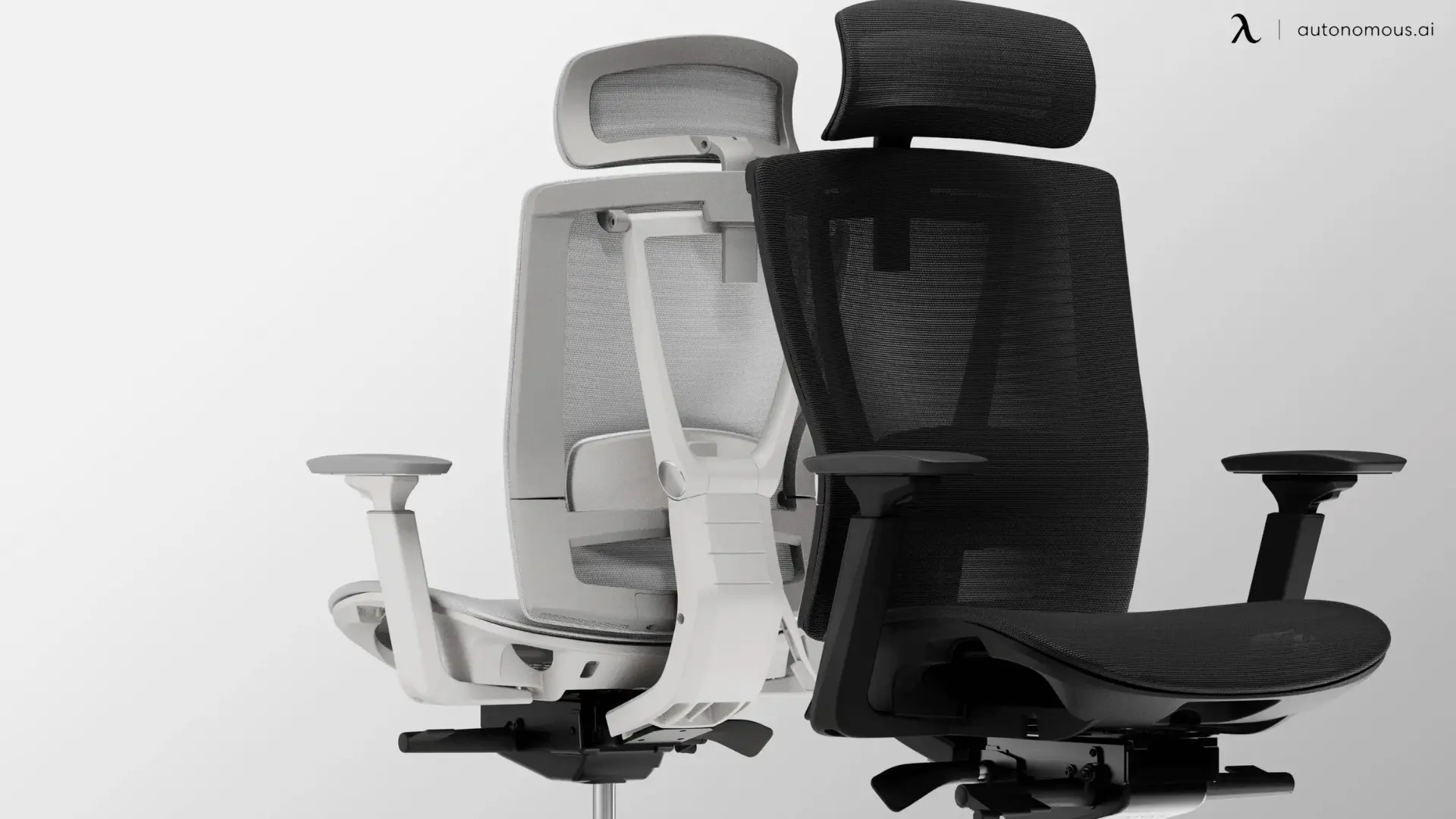
Benefits Of A High-Back Office Chair
- Neck And Head Support:
The main difference between a high-back and mid-back chair lies in the height of the backrest. A high-back chair extends further, offering neck and shoulder support, while a mid-back chair supports just the lumbar and mid-back region.
If you’re looking for options that prioritize this kind of support, you might want to explore some good office chairs for neck pain designed specifically to reduce tension and improve posture across the entire spine.
The extended backrest ensures that users maintain proper alignment from the lumbar spine to the neck, making it especially beneficial for individuals prone to neck pain or upper back discomfort.
For those grappling with upper back pain, you might want to check out our guide on the best office chairs for upper back pain to find the right chair to support your posture and relieve pain.
- Enhanced Spinal Alignment:
The high backrest encourages a more upright posture by supporting the entire spine. For users with back pain, the high-back office chair helps alleviate pressure on the lower spine, reducing the risk of slouching and promoting better spinal health over time.
If you're specifically dealing with back pain, consider exploring our list of orthopedic office chairs, designed to provide extra support and comfort to improve posture and alleviate discomfort.
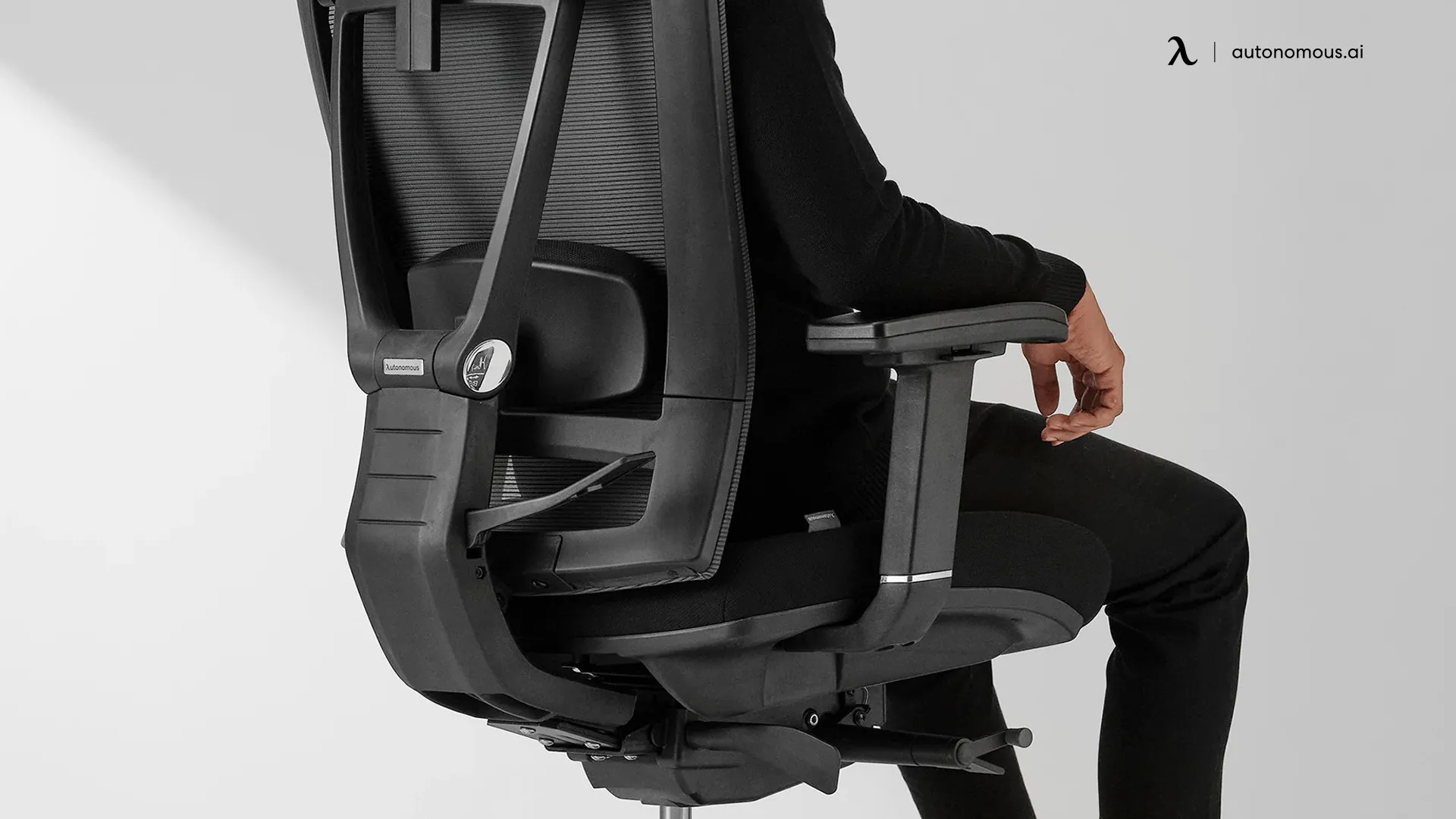
- Designed For Extended Sitting:
Between mid-back chairs vs high-back chairs, high-back chairs are engineered for comfort during long work hours, providing ample support for those who work 8+ hours a day. The additional headrest and backrest support minimize strain on the neck, shoulders, and lower back, offering a relaxed yet supportive sitting experience.
If you’re looking for a chair to comfortably support you during long working sessions, check out our picks on the best office chairs for long hours to find a solution that suits your needs.
- Customizable Features:
Many high-back chairs come with adjustable features like lumbar support, armrests, tilt functions, and headrests, which can be tailored to the user’s specific body type and sitting preferences.
This customization allows users to find the most comfortable position, reducing the likelihood of developing aches and pains during long periods of use.
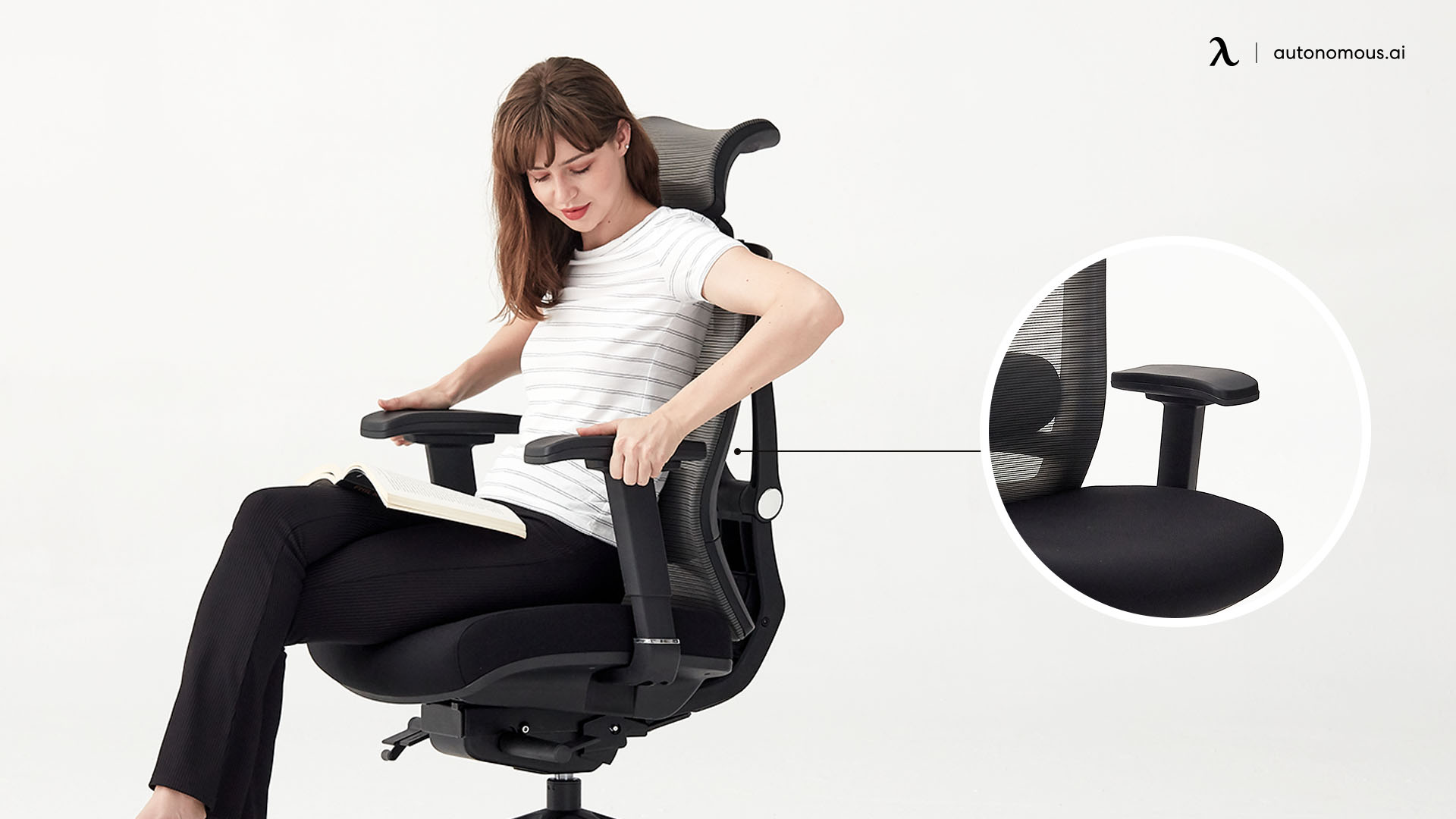
Mid-Back Chair Vs High-Back Chair: Key Differences
Understanding the key differences between a high-back and mid-back chair will help you make the best decision for your workspace.
A high-back and mid-back chair serve different needs: while a high-back chair excels at long-hour sitting, a mid-back chair offers mobility and space efficiency.
Here’s a detailed comparison to help you choose the best option:
Feature | Mid-Back Office Chair | High-Back Office Chair |
Backrest Height | Provides support up to the mid-back | Supports from mid-back to neck/head |
Support | Primarily offers lumbar support | Offers full support (neck, shoulders, back) |
Comfort | Suitable for short to moderate use | Designed for long hours of sitting |
Ideal Use | Best for conference rooms or light office tasks | Ideal for long work hours, executive offices |
Aesthetics | Compact, modern, minimalistic | Formal and professional appearance |
Price Range | More affordable, budget-friendly | Typically more expensive due to extra features |
Weight Capacity | Generally supports lower weight limits | Often designed to support higher weight capacities |
Adjustment Features | Limited adjustments (height, tilt) | More adjustment options (height, lumbar support, headrest) |
High-Back And Mid-Back Chair: How To Choose The Right One For You
Choosing between a mid-back vs high-back office chair isn’t just about style or how it looks in your office—it’s about supporting your health and well-being throughout the day.
Whether you choose any option, it’s essential to consider how a high-back vs mid-back office chair will support your posture and comfort, especially if you spend long hours sitting.
1. Consider Your Work Habits And Sitting Duration
The right high-back and mid-back chair choice depends on how long you typically sit and the amount of mobility you need.
If you spend most of your day at your desk, between high-back vs mid-back office chairs, a high-back chair will provide much-needed support for your neck, shoulders, and back. It encourages proper alignment by offering comprehensive support that helps maintain the natural curve of your spine.
On the other hand, if your work involves shorter sitting periods or frequent movement (e.g., moving between desks or attending meetings), a mid-back chair can be a great option. It supports your lumbar region and lower back, helping you stay comfortable without restricting your movement.
2. Health Support: Prioritize Posture And Comfort
Your chair is one of the most important factors in maintaining good posture. For individuals who sit for extended periods, between mid-back vs high-back office chairs, you should opt for a high-back chair with adjustable lumbar support, or a headrest to reduce the risk of back pain and promote healthy spinal alignment.
If you alternate between sitting and standing throughout the day, a mid-back chair is lightweight and versatile. While offering excellent lumbar support, a mid-back chair may not provide the same upper back and neck support as a high-back option. However, it can still help promote good posture by keeping your lower back in a neutral position.
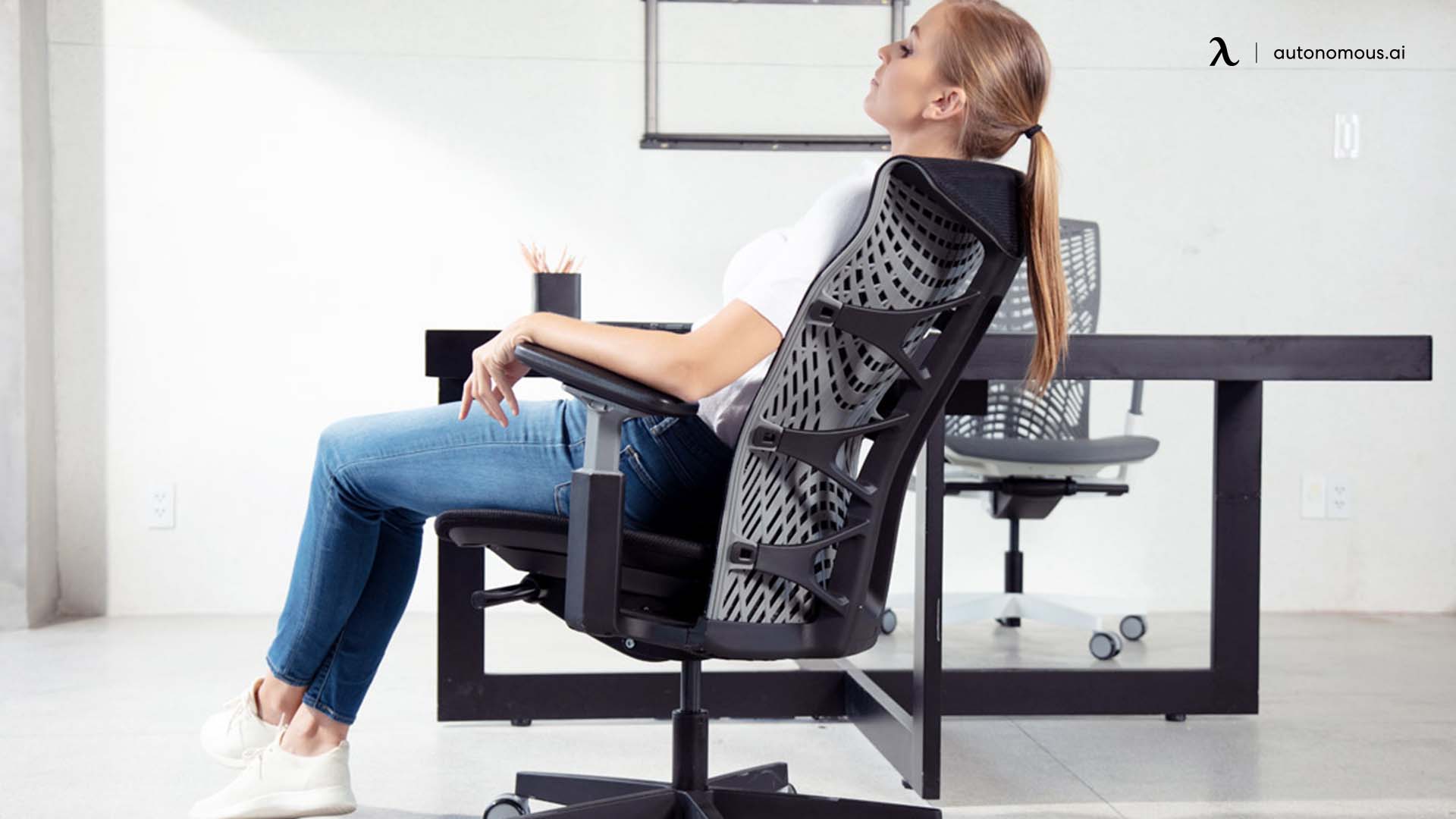
3. Assess Your Space And Mobility Needs
If your workspace is small or you need to move around frequently, between a mid-back chair vs high-back chair, a mid-back chair is often the better choice. Its compact design allows for greater flexibility and easy maneuverability.
In larger offices or executive settings, a high-back chair can provide extra comfort while sitting for long hours. It encourages proper posture and reduces strain on your back, helping prevent discomfort during extended meetings or projects that require prolonged sitting.
For individuals who need additional support, consider a big and tall office chair designed to accommodate larger body types, providing both comfort and durability for long hours of work.
4. Adjustability Features
Adjustability is a key factor when it comes to health support. Between high-back vs mid-back office chairs, a high-back chair typically offers more customization options, including adjustable lumbar support, tilt mechanisms, armrests, and headrests, all of which help you find the most comfortable and ergonomic position.
For those who experience neck pain, these features are essential for tailoring the chair to your unique needs.
If you're specifically looking for a chair to help you prevent neck pain, explore our office chairs with headrests to provide added neck support.
While mid-back chairs generally offer fewer adjustments, many models still feature height and tilt controls to ensure a comfortable sitting position. For those who prefer simplicity or need a chair that can easily transition between different workstations, a mid-back chair might be the best fit.
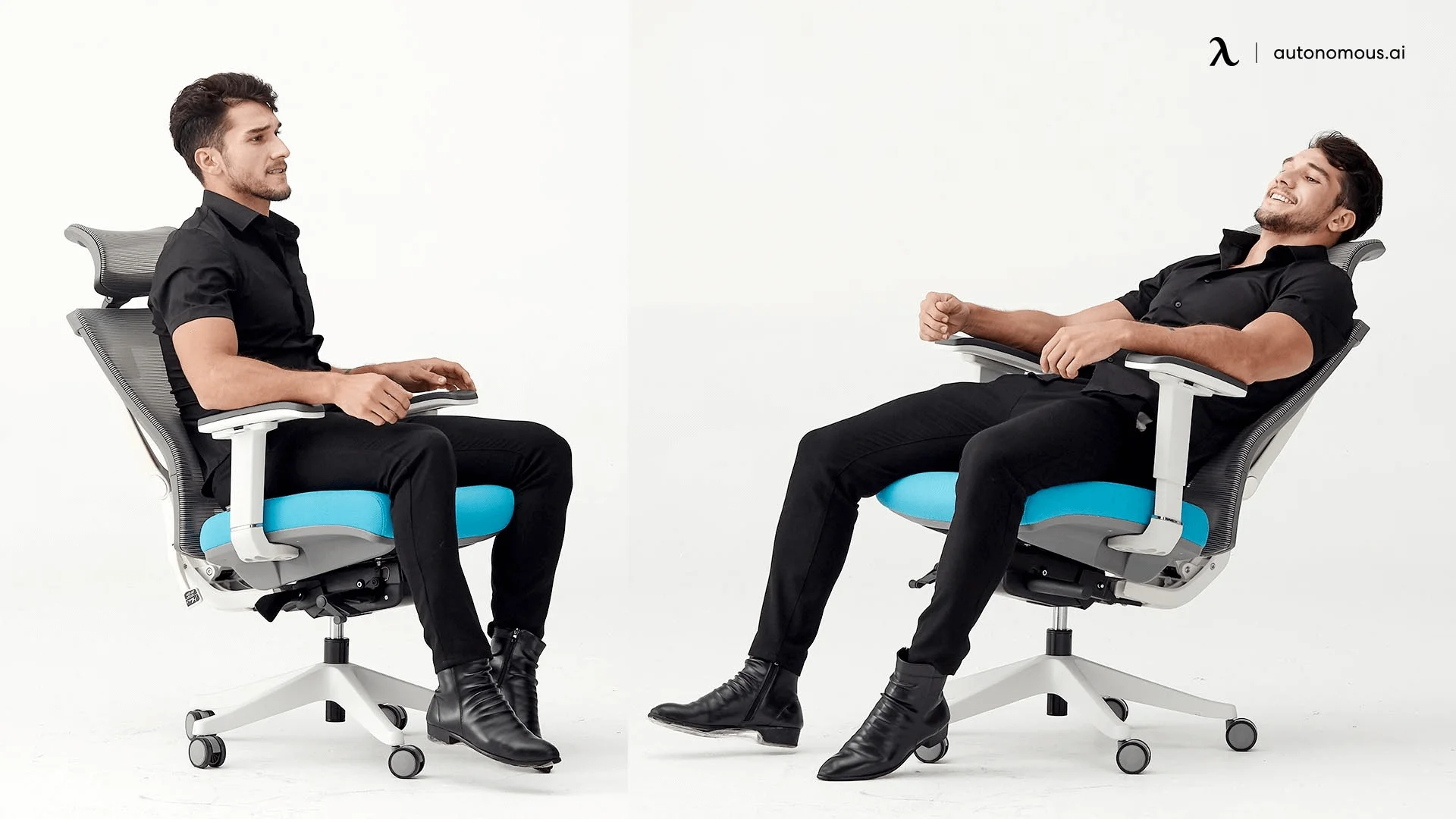
5. Your Personal Comfort And Style Preferences
Your comfort and style preferences will ultimately guide you toward the chair that fits best within your workspace. If you enjoy a more formal or executive-style office, between high-back vs mid-back office chairs, a high-back chair might be the best choice.
For those who prioritize flexibility, movement, and a more modern, minimalist design, a mid-back chair may suit your needs perfectly.
If you're looking for a stylish and functional chair for your workspace, consider exploring our modern office chairs, designed to fit seamlessly into both small and large offices.
Tip: Test Before You Buy
If possible, test out high-back and mid-back chairs before making a decision. Take the time to adjust the settings and sit in each chair for at least 15 minutes to see how they feel.
Pay attention to how well a high-back and mid-back chair supports your lower back and whether you feel any strain in your upper back or neck.
If you're shorter in stature and need a chair that fits you perfectly, check out our guide on ergonomic chairs for short people. It's essential to find a chair that delivers optimal support for your body type.
And if you're considering a chair with a higher weight capacity, our office chair for 300 lbs is a top choice, built with uncompromising comfort and durability. Don’t settle for anything less.
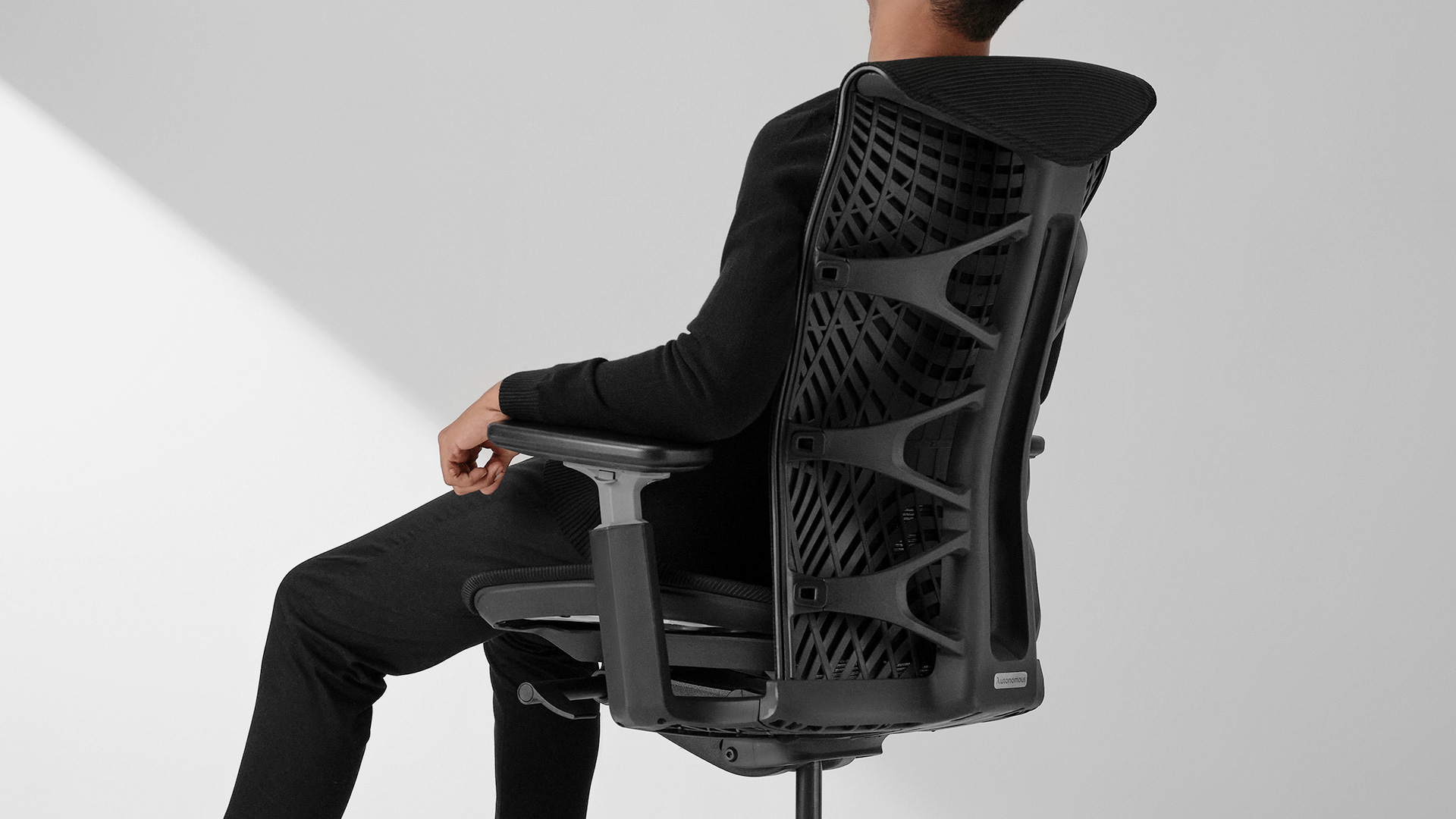
Ergonomic Solutions To Maximize Comfort And Support
To further enhance your comfort and support throughout the day, consider incorporating some ergonomic solutions and accessories into your setup.
These additions can make a big difference in how you feel during and after work.
- Ergonomic Desk Setup
Ensure your desk is at the right height, with your elbows at a 90-degree angle. A standing desk lets you alternate between sitting and standing, reducing strain.
- Lumbar Support Cushions
If your chair lacks lumbar support, add a cushion to support your lower back and encourage good posture.
- Footrests
An office footrest helps keep your feet flat on the floor, promoting circulation and reducing strain on your legs and lower back.
- Adjustable Keyboard And Mouse
Position your keyboard and mouse at elbow height to avoid wrist strain and ensure a neutral posture.
Even with a comfortable high-back and mid-back chair, ergonomic accessories like lumbar cushions and adjustable footrests can further enhance your sitting experience.
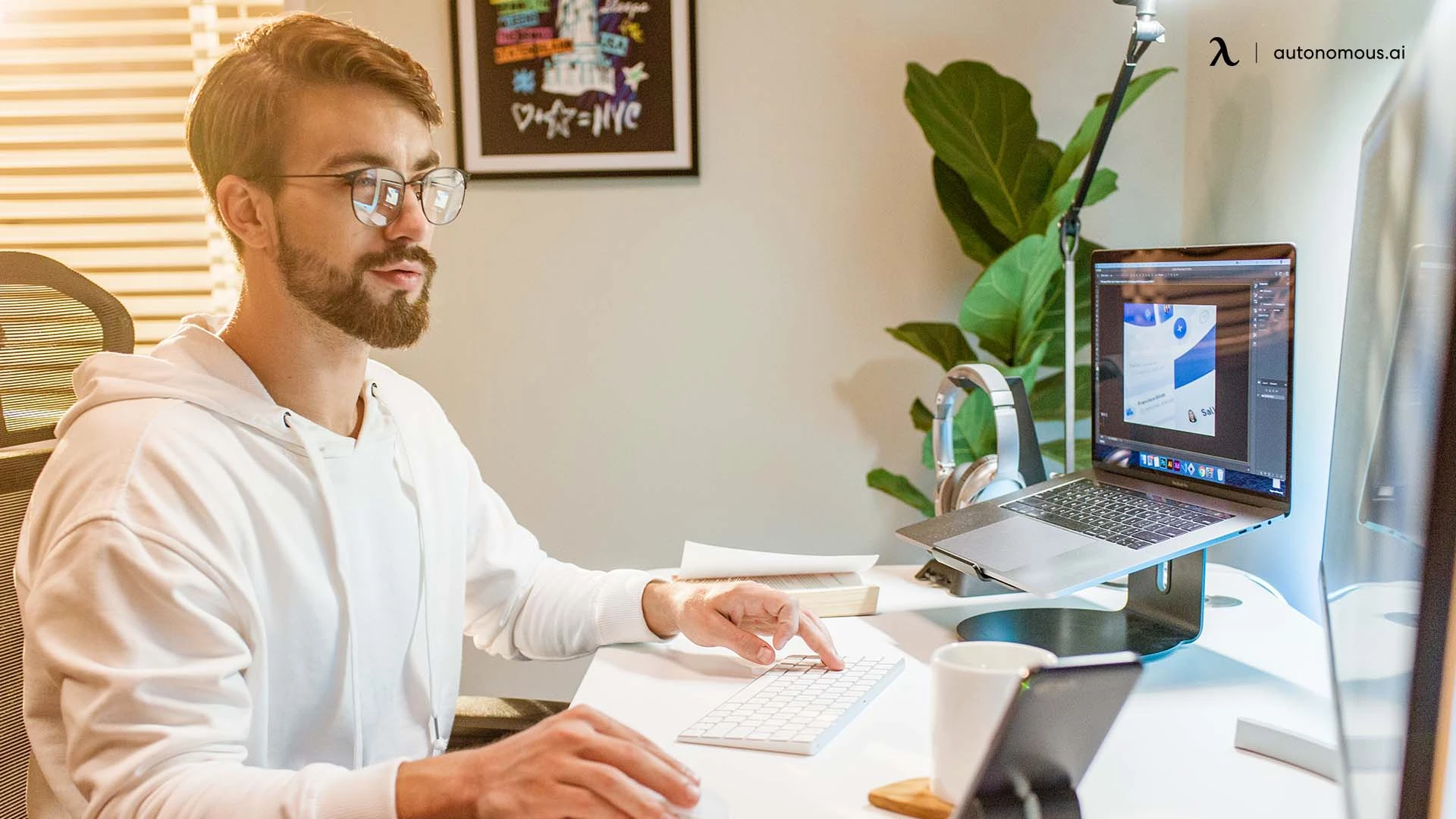
FAQs
1. What is the difference between high-back and mid-back chairs?
Between mid-back chairs vs high-back chairs, a high-back chair provides full support for your neck, shoulders, and upper back, making it ideal for long hours of sitting.
In contrast, a mid-back chair offers lumbar support, focusing primarily on the lower back and mid-back, with a more compact design that suits shorter sitting periods and smaller spaces.
2. What is the point of a high-back chair?
The high-back chair is designed to offer complete upper body support, including the neck, shoulders, and back.
This makes it perfect for individuals who spend extended hours sitting at a desk, as it promotes better posture, reduces the risk of neck and back pain, and encourages spinal alignment.
3. What is the difference between a low-back and a mid-back office chair?
A low-back chair offers minimal support, usually just for the lower back, whereas a mid-back chair extends higher, providing support for both the lower back and mid-back.
The mid-back chair is more suitable for those who need moderate back support without the full upper body support offered by a high-back chair.
4. Should your office chair have a high back?
If you need full-body support for extended sitting, a high-back chair should be your go-to. On the other hand, if you need a more flexible option for shorter sitting periods, a mid-back chair is ideal.
The Final Verdict
When choosing between a high-back and a mid-back chair, it's important to consider your personal needs. If you're looking for a chair to handle short tasks, a mid-back option could be just right, particularly in tighter spaces. Conversely, if you require comprehensive support for long periods of sitting, a high-back chair will likely serve you better.
Additionally, ensure the chair dimensions suit your body type and workspace. For guidance on choosing the right fit, check out our article on finding suitable office chair dimensions.
In the end, the ideal choice hinges on your comfort levels, how much time you spend seated, and the layout of your workspace. Whether you opt for a mid-back or a high-back office chair, keep in mind that both types provide crucial support for your back. The best option will enhance your posture, fit your work habits, and align with your personal preferences.
Spread the word
.svg)

/https://cdn.autonomous.ai/production/ecm/240115/5(1).jpg)







